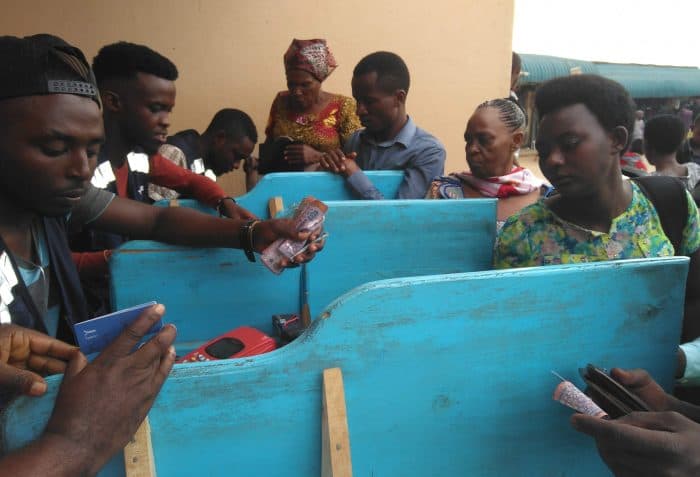Public transport institutional and regulatory responses to COVID-19



I have been mapping the different responses to travel restrictions across cities of interests with a specific focus on public transport, a key component of urban transportation. Understanding the responses is a proxy to evaluate the status and investigate alternative futures of urban transport systems. The reference with which I explore these responses starts from appreciating that in whatever shape or form the response has been for cities. It provides an opportunity to bring together stakeholders with both mutual and competing interests~~.~~ It is also a good time to explore common objectives and align interests.
Mobile for urban resilience, the possibilities
Countries with mature institutional capabilities present interesting and alternative responses to the travel restrictions. The responses have displayed agility and resilience in the manner with which passenger safety and operational hazards were minimised. The pandemic accelerated innovation – encouraging mobile mechanisms for cashless fare payments. The public transport system in Kigali, Rwanda is 100% cashless sustained by a tap-on Automated Fare Collection – AFC card. However, passengers still need to queue to load travel fares causing huge crowding. In response to physical distancing requirements, promoting the use of already popular mobile money to load fares on a card was accelerated to minimise physical contact with an agent. Also, the terminals were equipped with washbasins to assist with disinfection and minimise unhygienic conditions.
The Western Cape provincial government in South Africa implemented a rapid USSD platform to gather feedback from public transport users to manage public transport operator compliance. The main objective of the platform sought to monitor compliance on loading restrictions, hygiene and physical distancing requirements. This is another example of how mature institutional capabilities have responded to the pandemic. What we see as a result of the success is good regulation, planning and a clear contracting model that empowers both the operators and contracting authorities to respond with precision.
The reform agenda, institutional arrangements
To regularise minibus operators, the Zimbabwe government directed that every vehicle operator will need to be registered with the state-owned bus company to provide public transport services after the restrictions are relaxed. Essentially all private-public transport operators will only be allowed to operate as a franchise of the state-owned bus company. The government is building a public monopoly on the bus company, reinforcing its modernisation agenda.
How do we design and deploy interventions that have specific outcomes towards improving public transport provision?
Public monopolies have their inefficiencies. Also, fragmented private ownership and ambiguous governance and self-regulatory structures must be discouraged. How do we design and deploy interventions that have specific outcomes for improving public transport provision? In the absence of organised labour and strong representative organisations even for vehicle owners of public transport services, the directive will negatively impact an already fragmented transport ecosystem and worse off an already distressed public transport user.
In the short term, a transformation agenda should be prioritised. Improving vehicle supply and frequency of services to meet passenger demand should also be prioritised. A path to implementing the public transport modernisation program must be outlined and key stakeholders must be consulted.
The intention to develop a mass transportation system must be supported. The rollout of a cashless tap on system on state-run buses must be commended and network-wide adoption as well innovative approaches must be promoted. The medium to long term plan must work on developing institutional capabilities that support regulation, contracting and monitoring of public transport services in urban areas. Functions of local government, city councils and private sector must be clearly defined.
Mobility regulation, restriction of the poor
The two and three-wheelers – motorbike taxis – have become a key feature as an urban mobility solution. Motorbike taxis contribute to more equity in daily travel by widening access to motorized modes to larger population groups, particularly the least underprivileged segment of the urban poor. They improve spatial and temporal accessibility by facilitating access to locations which are problematic for other vehicles, going almost everywhere and stopping near their home. Consequently, even more than other modes of public transport, motorbike taxis help to limit the processes of spatial segregation. The response to motos has been expected from authorities. Largely seen as a nuisance and unsafe. Nationwide restrictions have been implemented. For most urban areas moto-taxis are a source of income for urban youth. Restrictions and nationwide bans affect the livelihoods of moto-taxi drivers and their dependents._ _
Can we reshape urban transport mode functions and explore alternative economies that support, protect and create jobs and deliver value as we implement regulatory interventions?
Understanding that the moto-taxi is a core mode of transport for the urban poor. What are possible places to locate them as legible solutions to the urban mobility challenges in cities in the global south? Where the moto-taxi is purposeful and resourceful especially in regions where other motorised modes are not feasible, it must be maintained and supported as it enables and empowers the movement of under-resourced people. Can we reshape urban transport mode functions and explore alternative economies that support, protect and create jobs and deliver value as we implement regulatory interventions? Widespread banning of motos restricts the movement of the poor and does not solve the pressing urban mobility challenges facing residents in urbanising communities. Instead, electrification programs for motor-taxi must be promoted and encouraged. For dense cities, planning for non-motorised transport must in the short to medium term account for the moto-taxi as an interfacing mode with existing and planned non-motorised infrastructure. Application of technology has had significant improvement on moto-taxi safety. Building around these technologies enables cities to enforce safety, compliance, and plan using evidence-based approaches which explore sustainable use cases of the moto-taxi in urban transport provision.
Key Takeaways
- Innovation for resilience – mobile technology continues to support transport resilience, solving both the challenges of payments, enforcement and access to information. Exploring more ways of using mobile to achieve sustainable transport objectives should be explored.
- Institutional reform – strong institutions still required. There is interest and political will to engage with the urban transport challenges. Institutional capabilities to drive a nationwide public transport agenda remain limited. The contestation between setting up public monopolies and keeping up with fragmented and chaotic private operators will remain challenging.
- Mobility reconfiguration and regulation must not restrict the poor. Rising mobility challenges require regulatory flexibility. At the core of any regulatory configuration of urban mobility, the less privileged must not be left behind and livelihoods must not be destroyed.